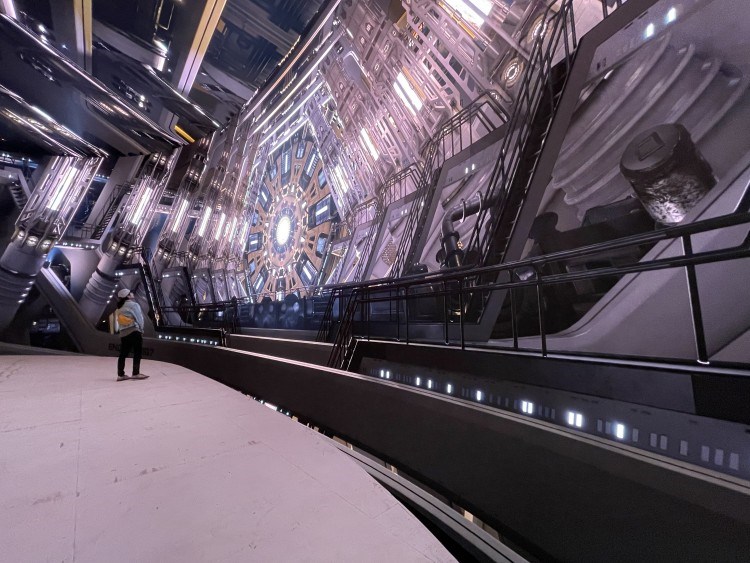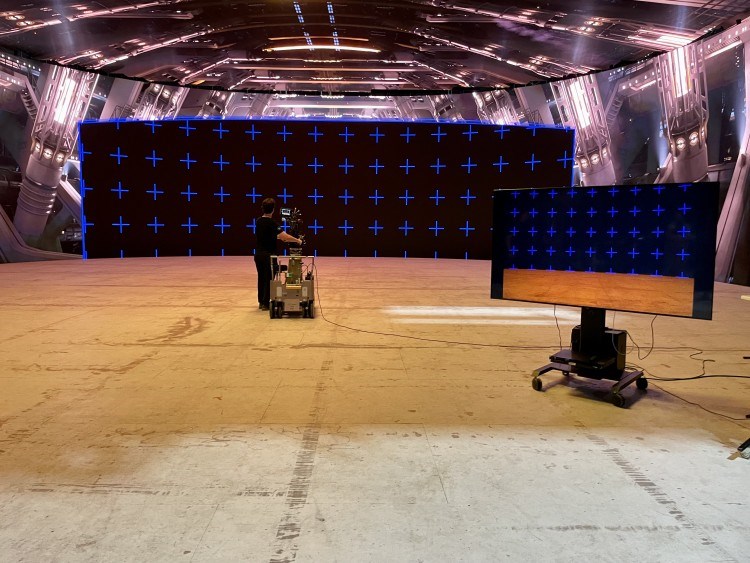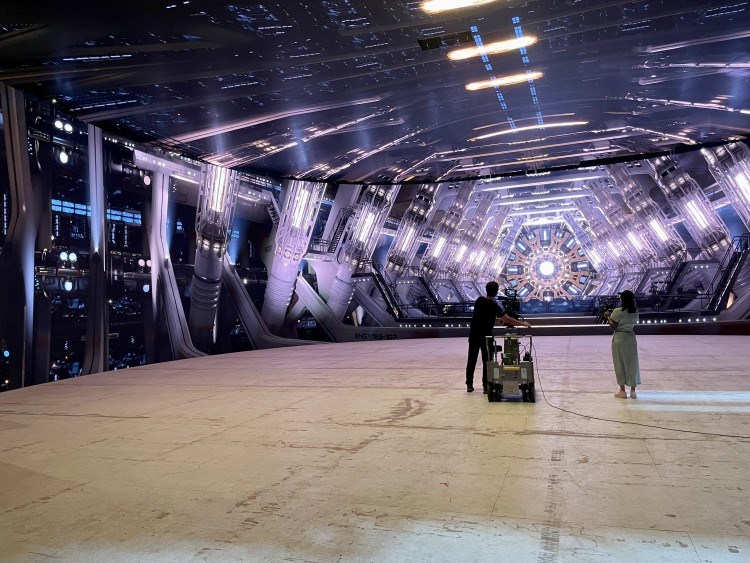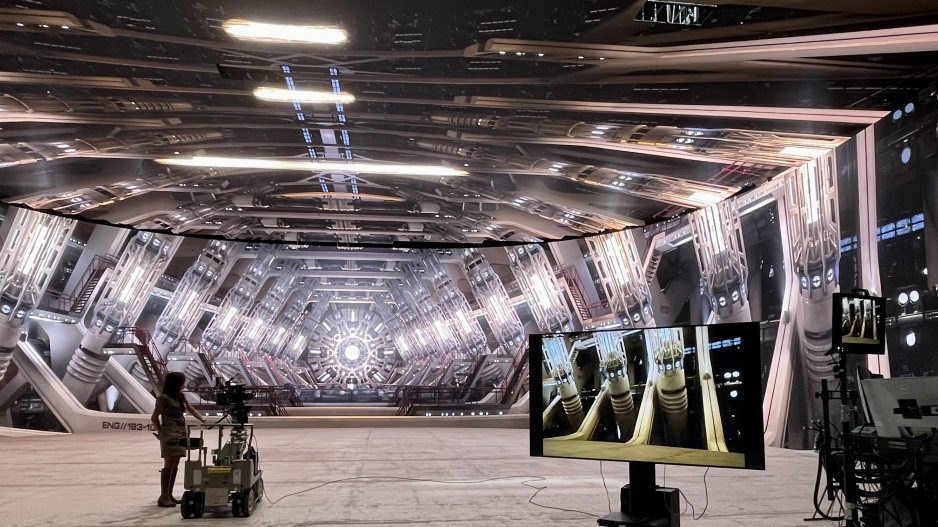Twenty-third century spacefarers in Star Trek frequently find themselves ferrying through transporter beams to travel virtually anywhere within a few thousand kilometres.
In the 21st century, virtual film sets are now beaming into B.C. studios coated in LED screens to create the illusion of strange new worlds materializing around actors and physical sets. It’s an endeavour aimed at generating fantastical environments that would otherwise be prohibitively expensive or practically impossible to render for local film productions.
“We're not replacing anything. We're sort of extending, enhancing [and] offering a new tool,” said Gladys Tong, virtual production supervisor for the new 7,00o-square-foot circular “volume” stage at the Canadian Motion Picture Park in south Burnaby.
“Because in our foreground shots or our final frames, we want to see real people in live action, we want to see real sets … There's only so much of the real world that you want to replace digitally.”
William F. White International Inc. (WFW) opened its first Volume stage in Metro Vancouver just under a year ago in partnership with L.A.-based visual effects house Pixomondo (PXO), which creates the digital environments.
This local Volume stage, the largest in the world, is covered in LED screens spanning 24 metres in width and 7.5 metres in height, encircling actors and physical sets to provide lifelike, digital environments such as alien planets, fantasy worlds and spaceships.
For the past eight months the Volume stage has been supporting the production of Netflix Inc.’s (Nasdaq:NFLX) upcoming Avatar: The Last Airbender live-action TV series, set in a fantasy world known as Asiatic.
Sci-fi fans may have already witnessed the Volume at work in shows shot in Toronto and L.A., such as Star Trek: Strange New Worlds, Star Trek: Discovery and The Mandalorian. For those series, actors and physical sets sit in the foreground of shots that are complemented by the LED Volume’s highly detailed digital renderings of far-off planets or spaceship interiors that sit in the background of those shots.
Film and TV productions have typically relied on green screens to create the illusion of vast fantasy landscapes sitting behind actors or else alien planets peeking through the windows of space ships. In those cases, visual effects teams fill in the blank green screens with images after the physical shots are complete.
PXO’s environments are rendered in 3D prior to filming, allowing actors and crew members to see the backgrounds when they arrive on stage.
If a director wishes to rotate the environment in the Volume or move it side to side, the 3D rendering reveals additional dimensions. And if a director wishes for the camera to sit at a different angle, the 3D digital background changes accordingly to reveal different angles, unlike the typical painted or photographic backdrops often used in cinema.
Although Star Trek: Strange New Worlds is shot in Toronto where the spinoff’s physical sets, crew and actors are based, a virtual production team at the Burnaby Volume stage was able to beam in the same 3D digital rendering used for scenes in the starship Enterprise’s engine room.
On filming days at the Toronto studio, the LED Volume envelops a physical set featuring tactile railings and 23rd century consoles that actors can interact with.
The LED Volume then delivers a backdrop featuring the Enterprise’s mammoth engines, making it appear as if the physical set actually stretches for another 100 metres or so.
While the physical sets for the engine room weren’t present at the studio in Burnaby for a recent demonstration, the background manifested digitally as the Volume wrapped itself around a local audience standing within the 310-degree circle.

“This particular environment took us six months to build, which is the longest we have taken on an environment,” said Josh Kerekes, PXO's head of virtual production.
“The reason why this particular environment took so long is it had a lot of additional requirements. First off, it's a standing set for Star Trek that's been used in almost every episode for two seasons now. So with that, it needs to be a lot of different things.”
If the Enterprise’s engines begin melting down in an episode, the environment has been designed to switch those engines from soft, glowing blue and white to a tense orange hue with sparks and steam emitting.
Film crews are also able to adjust colour and lighting settings depending on what they wish to accomplish with the shot.
“There's a lot of up-front prep that went into that. But it's paid dividends as they're able to just rapidly come in here and the DP [director of photography] is free to sculpt and change the look of the environments based on the scene,” Kerekes said.
The film industry was worth $3.3 billion to the B.C. economy in the 2020-21 fiscal year – up 13 per cent from the previous year’s $2.9 billion, according to the Canadian Media Producers Association’s Profile 2021 report released earlier this year.
Most of B.C.’s production activity was concentrated on foreign-service work for Hollywood features and TV shows, generating $2.7 billion. That’s 52 per cent of all foreign-service work done in Canada this past year.
The arrival of the world’s largest LED stage in Metro Vancouver has already brought out industry insiders for demonstrations after Avatar: The Last Airbender just wrapped its own virtual production.
“Virtual production is huge right now in all of the studios,” Mary Lim, Vancouver Film School’s former manager of education and program development lead, told BIV in May.






